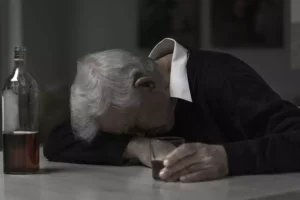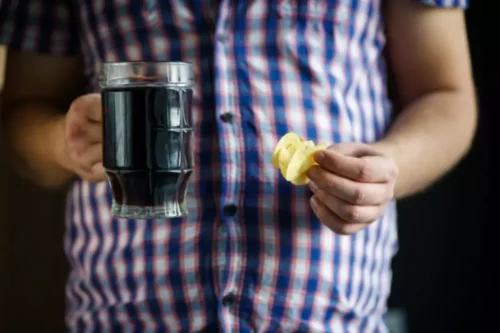
IRL, though, I haven’t had a real drink or hard drug in more than nine years. It’s incredibly important to me that I haven’t used weed in a year, but telling people I’m a year sober feels like lying. But I also don’t feel like I owe everyone a detailed explanation of my substance use and abuse, nor do I feel like the time I spent not using weed was wasted.
Finding a Sober House in Massachusetts
They are also commonly known as boston sober homes, recovery homes, halfway houses or recovery residences. This intensive outpatient program is often used as a step-down from inpatient care or a step-up from traditional outpatient services when a higher level of care is needed. Our Massachusetts PHP programs typically last 6 hours each day, up to 6 days a week. During this, clients participate in a combination of evidence-based therapies, including individual, group, and family therapy. Avenues NYC sober livings are comfortable, casual, safe environments where residents can forget about the stressors of the outside world and focus on their own growth. Tucked away on quiet side streets in Manhattan’s TriBeCa neighborhood, Avenues NYC’s TriBeCa sober living spaces offer a serene escape from the temptations of city life – without sacrificing the comforts of home.
- Sober living homes in the U.S. aren’t covered by insurance and are often paid for out of pocket.
- Halfway houses, also known as sober re-entry programs, tend to be more structured.
- They also tend to be affiliated with addiction treatment centers that provide outpatient programs.
- Financial assistance programs, including grants, scholarships, and public funding, are also available for people recovering from addiction.
- Most Massachusetts sober living homes place restrictions on new residents.
How Sober Living Homes Fit into the Rehabilitation Process
Residents who abide by these guidelines have a higher chance of avoiding a relapse while living in a sober home. Most Massachusetts sober living houses encourage their residents to practice new healthy habits such as meditation, exercising, or volunteering in the community. All sober living homes have a zero-tolerance policy regarding the use of drugs or alcohol. Usually, residents have recently completed inpatient or intensive outpatient treatment for substance use addiction. Sometimes, sober living houses also act as a stand-alone approach for substance misuse problems, meaning that someone will go straight there without first attending a residential treatment center. In particular, sober living and halfway houses can help somebody maintain recovery by providing a safe, sober environment.

The History of Sober Living Houses
A new house member must be interviewed by current residents and must receive an 80 percent vote of approval to be accepted. The best facilities employ compassionate staff and enforce strict rules that support the recovery process. All of a sober house’s residents are expected to pursue better health and a substance-free life. While sober living houses have research touting their efficacy, it is also important to remember that they are still environments where you are living with others and the focus is on staying sober.

Binance Founder Changpeng Zhao moved to Halfway House against a possible September release
TCs are a structured, clinical environment and are usually full-service, meaning that residents don’t have to go offsite for treatment. Recovery Residences (RRs) are organized into four categories, or “levels,” by the NARR. The levels describe the intensiveness of the program and the level of care provided. Residents are often required to take drug tests and demonstrate efforts toward long-term recovery. In addition to reducing the risk of relapse, recovery residences have other benefits. One study of 330 residents at 49 sober living homes in California found that residents had increased odds of total abstinence and employment.
- Unlike many halfway houses, sober homes are not monitored by state agencies.
- It was a concept that came to Radke while he was deep into recovery for his alcohol and cocaine addiction.
- A great way to find a sober living house in your area is first to explore your network.
- These function as facilities where individuals who were previously homeless can live as they begin to find stability and move towards securing independent housing.
- Binance Co-founder and former CEO Changpeng Zhao has been moved from a prison to a halfway house in preparation for a possible release in September.

More modern versions were opened in the 1940s and focused on supporting rehabilitation from substance abuse. These facilities are generally more pleasant and less crowded than halfway houses. Sober living houses are also called sober residences, recovery houses, and recovery residences, among other names. Recovery residences are less expensive than living at a rehabilitation facility or detox center because fewer services are offered. But many sober homes require residents to attend support group meetings or participate in 12-step programs or outpatient treatment, which may be an additional cost for residents to consider. They are environments free of substance abuse where individuals can receive support from peers who are also in recovery.

Your sober living house may offer you the opportunity to work and either offset your rent or pay you in a more conventional way. Additionally, there may be a resident council, where elected residents convene to make important house rules and logistics decisions. Health among these different areas is addressed using various resources available through sober living houses. For example, you may be introduced to techniques like journaling or meditation to improve your spiritual health.
Boston Sober Homes is a M.A.S.H certified sober housing company for those who are serious about their recovery and sobriety. Our mission is to provide clean, comfortable accommodations in a positive environment for those looking to live a sober lifestyle. Our homes and their atmospheres are nurtured by the guests they provide for. The self-sufficiency phase is the last step in sober living, bringing the resident closer to independent living. In this phase, resident responsibilities increase while becoming more accountable for all decisions.

Recent Comments